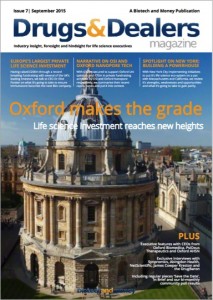Translational Funding: A Wellcome Perspective
Quality sites
- Online Casinos UK
- Casino Non Aams
- Casinos Not On Gamstop
- UK Casinos Not On Gamstop
- Best UK Casinos Not On Gamstop
- Casino Sites Not On Gamstop
- Casino Sites Not On Gamstop
- Casino Sites Not On Gamstop
- Non Gamstop Casino Sites UK
- Non Gamstop Casinos
- Best Online Casino Canada
- Casino Sites Not On Gamstop
- Non Gamstop Casino UK
- UK Online Casinos Not On Gamstop
- Best Slot Sites 2025
- Casinos Not On Gamstop
- Meilleur Casino En Ligne
- Non Gamstop Casinos
- Slots Not On Gamstop
- Non Gamstop Casino
- New Online Casinos Not Registered With Gamstop
- Casino Non Aams Sicuri
- Casino Sites UK Not On Gamstop
- Casino Non Aams Italia
- Bitcoin Casino
- Meilleur Site Casino En Ligne Belgique
The Wellcome Trust is a global charitable foundation with a stated aim of achieving extraordinary improvements in human and animal health. It is at the coalface of early stage biomedical research and its influence in the future of bioscience is pivotal. We caught up with their head of translational funding, Richard Seabrook, to discuss translational funding trends, success factors and pitfalls; the drug resistance problem and the state of UK life science plc.
B&M: Richard, you’re head of business development for the innovations division of the Wellcome Trust. Can you explain a little bit about what that role entails and where you add the greatest value?
Richard Seabrook: The role involves managing the Wellcome Trust’s translational funding. We will fund specialist academic groups, SME’s or even larger companies for public health reasons and when we can be convinced that we’re not subsidising their shareholders.
The value that we bring is that we’re able to develop products which otherwise would not get started because of the risk, economic cost or the difficulty of raising funds in the investment world. By way of evidencing that, we have a number of products that are on the market (no drugs or vaccines) and have had a number of exits with SME’s and a few IPO’s on the AIM market. Which are all indicators that we are adding value to the eco-system.
B&M: And what is it about the collection of services or offerings that you find unique or stand out for the Wellcome Trust?
Richard Seabrook: We are fortunate, what we can really bring is scientific and biomedical due diligence. Through the Trust’s network we’re able to bring due diligence which is genuinely international, and we’re able to get key opinion leaders not just from the scientific community but also from the clinical, financial and the regulatory communities. We can really get to understand a project before we fund it. It’s the advantage that we can bring.
In addition, we have no geographical limitation as to where we fund, which gives us an advantage over regional funders because we are able to compare projects from around the world before we decide which ones to fund.
B&M: What makes for a great project?
Richard Seabrook: Clearly a good project addresses an important unmet medical need. We’re not into ‘Me Too’s’ or making incremental differences. It’s helpful if the project is based on really good science, although we will fund projects in which the science is less profound if it is addressing an important public health need. And obviously we’re looking at funding teams of people who have all the right competences and attitude to deliver on the project.
B&M: I guess the core outcome for you in these projects is to make them ready for follow on funding? How do you manage the relationships with other investors and pharma and the business community?
Richard Seabrook: As a gap funder, a key question we consider is how far do you have to fund a project to deliver the data package that is going to be attractive to the follow on investor? Whether the follow-on is the financial community or an existing company. Obviously that’s a bit of a judgement call, and actually the data package that you have to produce sometimes changes during the lifetime of the project as things change in the eco-system.
We keep close contact with projects that we fund so we can feed into what that data package has to look like. We discuss it with potential partners and we’ll feed that information in to the project management team so we agree what package of data we have to aim at.
We’re fortunate at the Wellcome Trust because we have an investment division and through them good contact with the financial community both in Europe and the USA. We do work with a lot of large pharmaceutical and medtech companies indeed a lot of their people are already giving us advice on our projects. So we are able to contact those companies and find out what it is they are interested in and again what sort of data it will take to get their interest.
B&M: What are some of the pitfalls? Why might projects not follow on?
Richard Seabrook: Things don’t follow on for a variety of reasons. One is that there are enough alternative approaches, so you’re competing with other approaches and you’re maybe a little further behind or there’s some aspect of the programme that isn’t seen as competitive as another programme.
Sometimes you can be approaching large companies at the wrong point in time in terms of their own cycle and what they’re looking at. Sometimes there are fashions as well that you have to try and surf in order to find and attract a big funder. For example, immunotherapies are not new but are very popular with large pharma at the moment.
Fundamentally if you’ve got the right data package you will find an investor/partner, it just might take longer if it’s unfashionable.
B&M: How have you seen the translational funding landscape changing in the last few years?
Richard Seabrook: Definitely the move to single asset vehicles. Mean and lean, it is a model that we’ve had a lot of experience with for a number of years now. We think it is a very good way to go. The difficulty of course, from the company perspective, is it may be difficult to recruit people because if 1 asset fails there is no backup. So recruitment for companies can be difficult in places.
The other trend which we’ve spotted is the appetite for pharmaceutical companies to partner a lot earlier. Historically the sweet spot for partnering with a pharmaceutical company is when you have human proof of concept data. This is still the main magnetism between an out licencing group and a pharmaceutical company. Encouragingly though, there is evidence of a lot of interest in partnering at a much earlier stage. Indeed pharmaceutical companies are setting up incubators and innovation centres in hotspots around the world. That is all points to them trying to get to work with academics or SMEs at an earlier stage.
B&M: How do you see this trend affecting what the Wellcome Trust does? Do you see it as an opportunity or as a potential limitation?
Richard Seabrook: The eco-system is getting more and more complex. The differences between major pharma, biotech and academia are all getting fuzzier. And there are complex hybrid models emerging as well such as the open innovation centre Stevenage Bioscience Catalyst. It’s just a more complex system. But I think over all we don’t see the changes as a threat, it’s an opportunity. There are a variety of ways we can now work with organisations.
B&M: Are there any particular opportunities that you would be hoping to expand upon in the next 12 months?
Richard Seabrook: We’re particularly interested in the anti-microbial or drug resistance problem. We want to understand how we can have a bigger impact in that area, so that’s a bit of active research which we’re undertaking right now which will influence our strategy going forward.
B&M: What do you think are the principle obstacles to achieving success in tackling drug resistance?
Richard Seabrook: There are scientific challenges. It’s proving difficult to discover new classes of anti- microbial agents, particularly for bacteria. The target-based approach to drug discovery has been monumentally unsuccessful in this arena. People have gone back to doing phenotypic screens which are expected to be much more fruitful.
The part which is over shadowing all of it of course is the economic incentive component. The difficulty there is if you do get a new approved antimicrobial then it’s going to be on the reserve list, it isn’t going to be used immediately, this is stewardship to reduce the likelihood that resistance will occur. Therefore there’s a disconnect between the market pull and the public health needs. The public need new antibiotics but once they’re available they need to be kept on the shelf until needed, and that means low sale volume for the marketing organisation.
B&M: How do you think that can be addressed? Who can solve it?
Richard Seabrook: The Wellcome Trust are hosting a review sponsored by the Treasury and Department of Health in the UK to look at financial incentives for anti- microbial drug resistance, because it is a huge problem. The Office of Health Economics are also doing some work in this area, and there is a lot of work in the USA, e.g. the Infections Disease Society of America and IDSA and the Pew.
B&M: Are you optimistic that you’re going to be able to solve the problem? Are we doing enough at the moment to help address it?
Richard Seabrook: The problem has to be solved, otherwise medicine is going to lose one of its greatest beneficiaries for mankind, so I think eventually we will solve it. However, right now, globally we’re not doing enough. Pharmaceutical companies over the last 5 years have by and large left anti-infection research because of the economic problem, and we need to turn that around. Bear in mind 30% of people in a European hospital are on antibiotics. And there are some diseases now, in certain parts of the world, where 70% of cases have got multi-drug resistant bacteria. That’s pretty scary.
B&M: Beyond the anti-microbial challenge, what else from a Wellcome Trust point of view do you see areas of challenge in the short and medium term?
Richard Seabrook: There’s definitely an issue around major chronic diseases. Until recently we would have considered obesity, type II diabetes and Alzheimer’s as being very attractive to industry because of the very large markets, but there’s been a number of late stage phase III failures in those 3 major chronic disease areas and the pharmaceutical companies are now very, very conservative in these areas. We are thinking about what our strategy should be in our response to that. These are very serious threats to public health. Of course lifestyle can make a big difference. But that involves influencing human behaviour which is a very difficult thing to change.
The two challenges, the loss of anti-microbials and chronic diseases, if they continue the trajectory they are on, they’re going to bankrupt the healthcare systems.
B&M: What do you think the Wellcome Trust can do to halt that?
Richard Seabrook: I think one of the first things we can do is increase the visibility of it so the public and policy makers understand the problem. Secondly we need to think about how our research and translational funding can offer up solutions to these problems. And that includes how do we influence human behaviour. How do we use our understanding of the brain to enable people to make much healthier lifestyle choices?
B&M: On a more positive note, the UK life science sector as a whole is experiencing an upsurge, which is good to see. What in your view is contributing to that of late?
Richard Seabrook: I think it’s the result of a lot of hard work by a lot of people, say over the last 5, maybe 10 years. The difficulty is of course that these things may be cyclical. Let’s hope the sector remains buoyant.
We need to not get too carried away and just continue focusing and developing the assets, if the sector creates good products then the money will follow.
B&M: What do you think are the threats to UK lifescience plc?
Richard Seabrook: I think the biggest threat to the UK is a lack of critical mass of companies who want to build products and be around for a long time. Those types of companies provide the training, employee know-how and skills that you need in this sector, if the knowledge disappears the sector will disappear. It’s not a threat right now, but 10/15/20 years’ time, we just may not have enough people with the know how.
I think it’s important the amount of government funding going into the sector through TSB, MRC and the NIHR is maintained. It’s all providing fuel at the early stage. We also need to make sure the UK is attractive for clinical studies. At one point in time we were the best place to come and do clinical work and I’m not sure that is still the case. We need to get back to where we were.
B&M: What are you thoughts about the infamous ‘valley of death’ of funding?
Richard Seabrook: I think it is less deadly in the discovery area. In the early stage, there’s definitely more funding available. The difficulty is going from discovery to human proof of concept, which is 10 or 12 million pounds - that still remains very difficult.
B&M: One last question to wrap up on. If you were to give one piece of salient advice to an entrepreneur looking for translational funding, what one thing would you impart to them to increase their chances of success.
Richard Seabrook: I would say you really need to understand the target product profile. You really need to understand how your end user is going to use your product. Everything you do at an earlier stage has got to be aligned with this product profile.
This interview was taken from our August edition of Drugs & Dealers magazine. To read more great articles, like the above, from The Crick Institute, Imperial Innovations, Edinburgh BioQuarter, UCL Business, Isis Innovation, Cancer Research Technology, Coller IP, J&J Innovation, BBSRC, Marks & Clerk, GSK, Apposite Capital and Silicon Valley Bank Download it for free and become a Biotech and Money subscriber.




Leave a comment